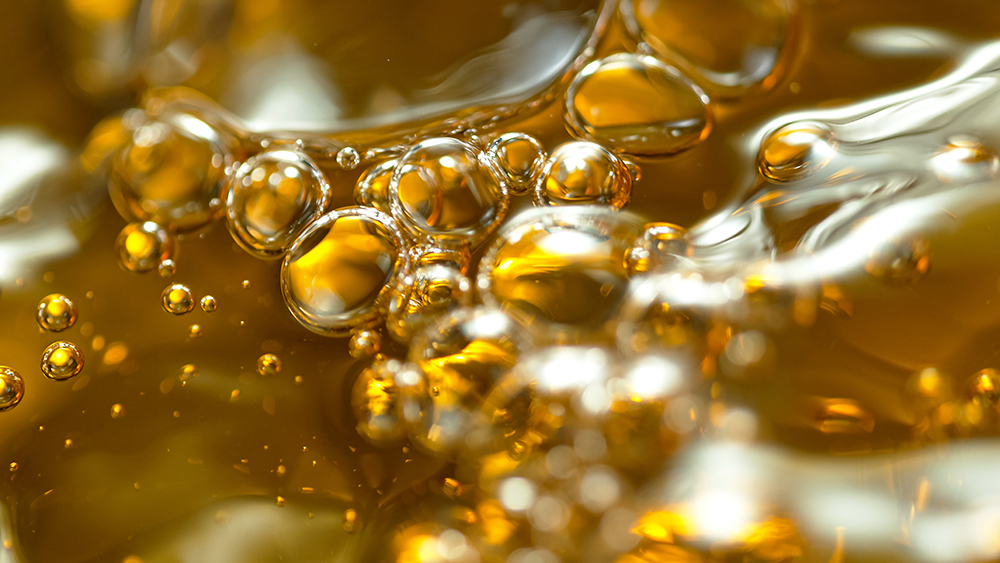
In this column, I will discuss the compatibility of polymer quenchants and materials used in the construction of quench tanks, heat exchangers, and pump seals.
Polymer quenchant products are concentrated, oil-free quenchant bases. They dissolve easily in water and are used in concentrations from two percent to 40 percent depending upon the quenching speed desired. The products are primarily used for quenching steel, aluminum, and titanium alloys. As systems in use will consist of 60 percent to 98 percent water with a few exceptions, materials used must be compatible with water.
Polymers will be mixtures of water and polyalkylene glycol (PAG), water and polyvinyl pyrrolidone (PVP), water and sodium polyacrylate (ACR), or water and poly(2-ethyl-2-oxazoline) (PEOX). There are other quenchants that are mixtures of these polymers in various amounts. In addition to the primary polymer, there are other additives, such as pH booster, corrosion inhibitors (steel and yellow metal), and other packages that provide specific capabilities, such as biostability. Each of these polymers and additive packages has specific compatibility to metallic and non-metallic materials.
Metallic compatibility
Most quenching systems are manufactured of low carbon steel such as boiler plate with similar or other metals used in the piping, cooling, and agitation systems.
• Steel: Generally, all polymer quenchants have ferrous corrosion inhibitors present to make the products compatible with steel.
• Aluminum: Unanodized aluminum is not considered compatible as it will corrode during long-term immersion. Anodized aluminum is compatible to a certain extent. It is like results obtained with plain water. Aluminum pump accessories are not compatible, as erosion occurs due to wear actions. Due to high pH, staining of aluminum may occur during prolonged exposure. Therefore, it is always recommended to rinse off excess polymer with water after quenching aluminum.
• Copper: Is compatible with polymer quenchant systems with a few exceptions. Ammonia-containing atmospheres have the ammonia dissolved into the water. This ammonia water solution corrodes copper vigorously. In such circumstances, replace copper-type cooling coils and accessories with steel. Brass is compatible but leaded brass should be avoided. Yellow metal corrosion inhibitors are often added to polymer quenchants to minimize corrosion. A solution that turns blue after time could be indicative of inadequate yellow metal corrosion inhibitors present in the quenchant, and may need a corrosion inhibitor boost.
• Cadmium, lead, magnesium and zinc: Are not compatible with polymer quenchant solutions.
• Cast iron and ductile irons: Rust more easily than steel. They should be coated with a compatible inhibitor prior to use. Additional corrosion inhibitors may need to be added to the solution to boost pH and minimize corrosion.

Non-Metallic Compatibility
Rubber and seal materials can react differently to different liquids. Different temperatures and exposure times can produce acceptable results under one set of conditions but result in failure under different conditions. Typically, these seal materials change volume by swelling. This can affect the performance of the product. Other non-metallic materials may degrade by exposure to the polymer quenchant.
Compatibility is usually measured by swell testing, by such test methods as “ASTM D471—Standard Test Method for Rubber Property—Effect of Liquids,” or “ISO 1817—Rubber, vulcanized or thermoplastic — Determination of the effect of liquids.” These test methods measure the degradation or swelling of the liquid/rubber (or polymer) pair.
Cork and leather are not compatible with polymer quenchant solutions. Swelling will most likely occur.
• Rubber: Buna N, Neoprene, Butyl, E.P.R., Fluorosilicone, Teflon, Viton, and Corfam are compatible within the temperature limitations listed by their manufacturer. Polyurethane rubber is not compatible with most polymer quenchants.
• Plastics: Acrylic, epoxy, Lucite, nylon, phenolic, polyethylene, PVC, silicone, and styrene are compatible within the temperature limitations given by the plastic supplier.
• Screen material: Cloth, cotton, and nylon are compatible. Review specific metal for metallic screen compatibility.
• Filter media: Diatomaceous or Fuller’s earth type, absorbent media is not compatible, nor are untreated cellulose media. Phenolic-treated cellulose is compatible, along with various plastic media. Sand filters are usually recommended for polymer quenchants because of the effectiveness and low cost of filter media.
• Paint: Epoxy and phenolic paints are compatible within temperature limitations listed by paint suppliers. Alkyd, polyurethane, and other industrial paints are not compatible. Lifting of paint often occurs. Sprayed-on truck bed liner materials have been used successfully by some users. It is good to test compatibility prior to extensive use.
In the case of specific or uncovered product compatibility, the polymer quenchant supplier should be contacted. There are many other different types of materials not covered here. Compatibility tests can usually be conducted by the polymer producer, or they have already performed the necessary compatibility tests. After exposing the seal material to the liquid, the properties of the seal material are measured. Often this includes the volume change, tensile properties (ultimate strength and elongation), and the hardness of the exposed material, as measured by a durometer.
Conclusion
The compatibility of different metallic and non-metallic materials with polymer quenchants is generally quite good. However, specific combinations of materials should be tested prior to application, or the manufacturer of the quenchant or material can be asked to perform swell testing of the specific product couple.
As always, should you have comments on this column, or suggestions for any other columns, please contact the writer or editor.

























